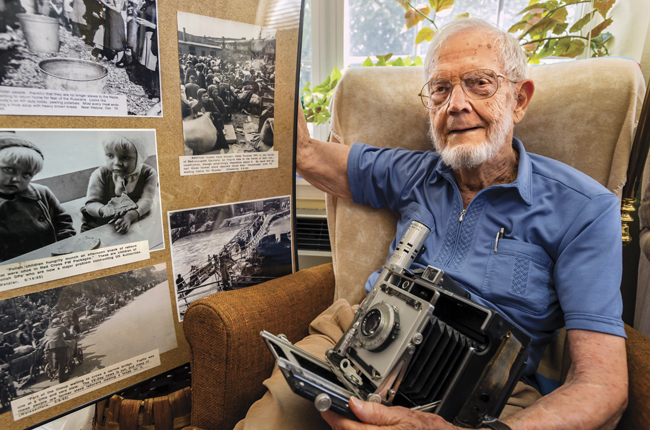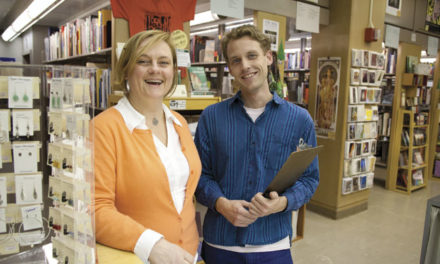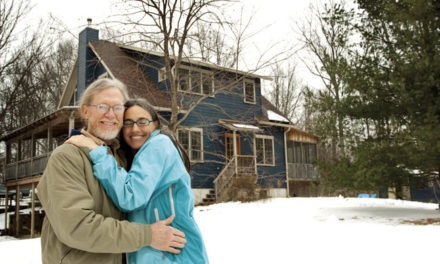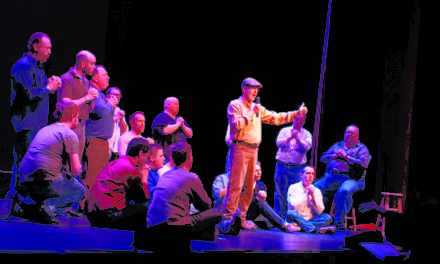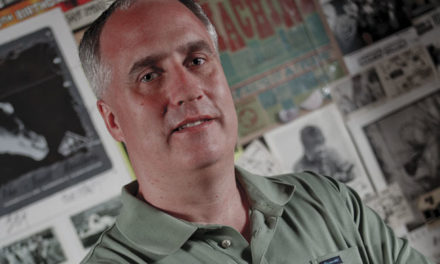BY STEVE RAYMER
Mac Fleming, 94, describes himself as “just an amateur photographer having fun.” His tiny apartment on Bloomington’s west side doubles as a gallery and is jammed with color photographs of his travels around the globe.
But Fleming was a different kind of photographer back in March and April of 1945. Then he was Sergeant Mac Fleming of the United States Army Signal Corps, and his job was to document the collapse of Hitler’s Third Reich without getting himself killed. “As we pushed out of the Ardennes Forest in Belgium, I was riding on the back of a Sherman tank,” he recalls. “The tank commander told me to get the hell off before I got shot, and that anyway all the great war photographs had been taken.”
Not quite.
On April 26, 1945, Fleming stood on the banks of the Elbe River at Torgau, south of Berlin, when GIs of the U.S. 69th Infantry Division linked up with Soviet troops of the 58th Guards Rifle Division and thereby cut the German army in two. Fleming’s still images and motion pictures of handshakes and vodka toasts were released simultaneously in Washington, London, and Moscow, reaffirming the determination of the then-Allies to crush the Nazis in the waning days of World War II.
Like Army photographers in Vietnam and other conflicts, Fleming carried a small personal camera in a first-aid pouch—a 1930s Kodak Vollenda—in addition to his bulky Army-issue still and movie cameras. And it is the thousands of images taken on Fleming’s personal camera—all meticulously organized and captioned—that Indiana University archivists are keen to preserve for future historians.
Besides the link-up at the Elbe, Fleming photographed the First United States Army storming across Ludendorff Bridge—the famed railroad Bridge at Remagen—after Nazi troops failed to blow up the last remaining passage across the Rhine. He went on to document the ruins of Frankfurt and Nuremberg, as well as heartbreaking scenes at displaced-persons camps and Allied prisoner-of-war cemeteries.
Fleming later worked as a chemist for the Eastman Kodak Company and as an educational filmmaker at IU. What he remembers best of the war years was the “thrill of being loose in Manhattan” during his Army photographic training in New York. And he has the pictures to prove it—images that Fleming modestly calls “grab shots” of Bob Hope, Frank Sinatra, and First Lady Eleanor Roosevelt.


